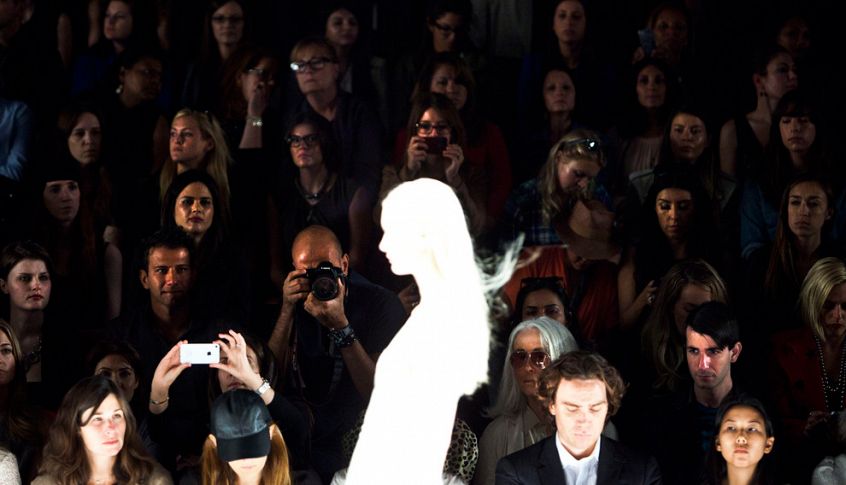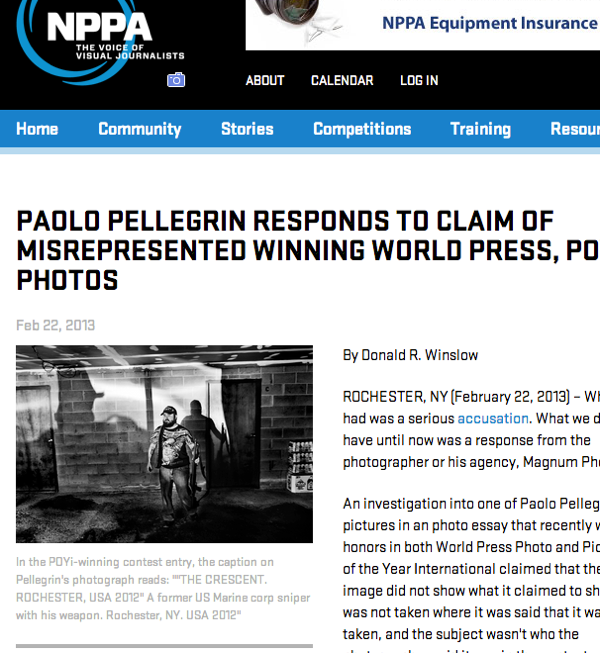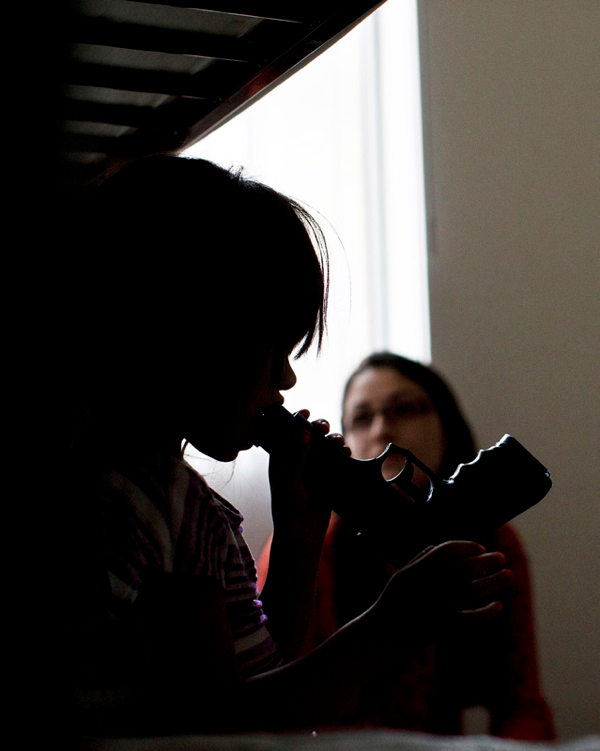Notes
The Ghost in the Machine
Fashion Week never ceases to teach me something. And now that the week lasts most of the year as the shows blossom one after another around the globe, there is much to learn. Not least about photography.
This image is from the New York Show last September. Fashion isn’t timeless, but the photographer’s artifice has captured something about photography itself. Perhaps the over-the-top artifice of the shows gave the photographer more artistic license than usual, for most would not intentionally overexpose the model that supposedly is the focal point of the event. By focusing on the audience, however, the image both brings them out of the darkness while turning her into a creature of light. Which she always was, of course.
But which is stranger: to see an all-white silhouette, or to see the act of spectatorship offered to view? One answer is that both are strange, with the emphasis depending on where you want to go philosophically. By focusing on the model, images of haunting come to mind, and one might recall how images of ghosts, fairies, spirit worlds, and other premonitions of life beyond death were a prominent part of the early history of photography. Ultimately (but not completely), realism trumped that exercise in imagination, but photography has remained a medium in several senses of the word ever since. As the bare outline of the model suggests, the camera is only capturing traces of what is there, with the rest to be supplied by the imagination. Likewise, one can imagine how images are already within the camera, waiting to be released, and also floating unseen through the air, waiting to be captured. Haunting is omnidirectional, I imagine.
But is there one ghost or many? As the members of the audience are brought out of the shadows, we are reminded how they also haunt the camera: always there unseen and often unbidden, waiting for the image to appear. Without the audience, there is no need for the image, so in one sense they have to always be there, unseen, as the potential force that allows the camera to flash.
They are more like us than any of us are like the model. They double our viewing, as we do theirs. I find the experience of seeing them seeing to be a bit troubling. (If you want to get a good dose of the experience, sit through the scene in the film Amour when the concert audience is waiting for the performance to begin.) We might ask why that is, but I don’t have time to consider that question today. I’ll close instead by noting how much there is to see about seeing.
The gazes in the audience shown above are by turns appraising, calculating, desiring, distracted, bored, and more. Some are extended into taking photographs, thus also doubling the act of taking this photo. Photography is a study in plurality, extended further by its own reproduction, and ultimately about itself only when it is showing what it means to see and be seen.
Or perhaps I should have said, to see what often goes unseen, even during Fashion Week.
— Robert Hariman
(cross-posted from No Caption Needed)
(photo: Andrew Burton/ Reuters. caption: Audience members watch a model during the J. Mendel Spring/Summer 2013 show at New York Fashion Week on September 12, 2012. By exposing for the darkened audience, the photographer overexposed the brightly lit model.)



Reactions
Comments Powered by Disqus